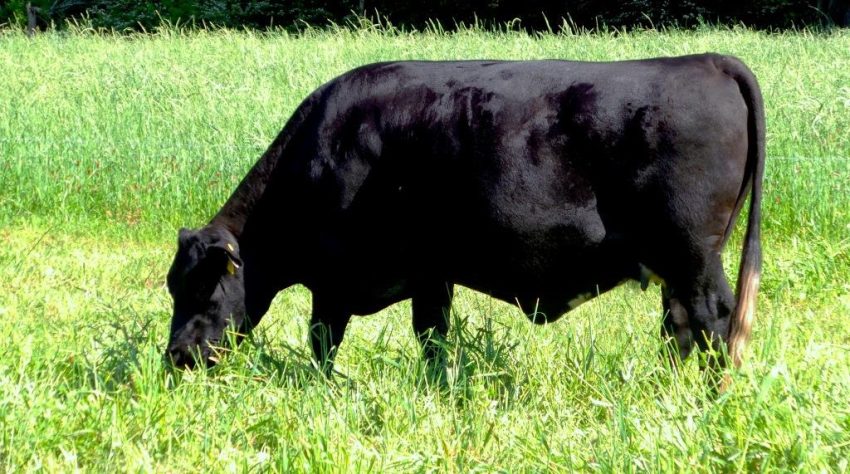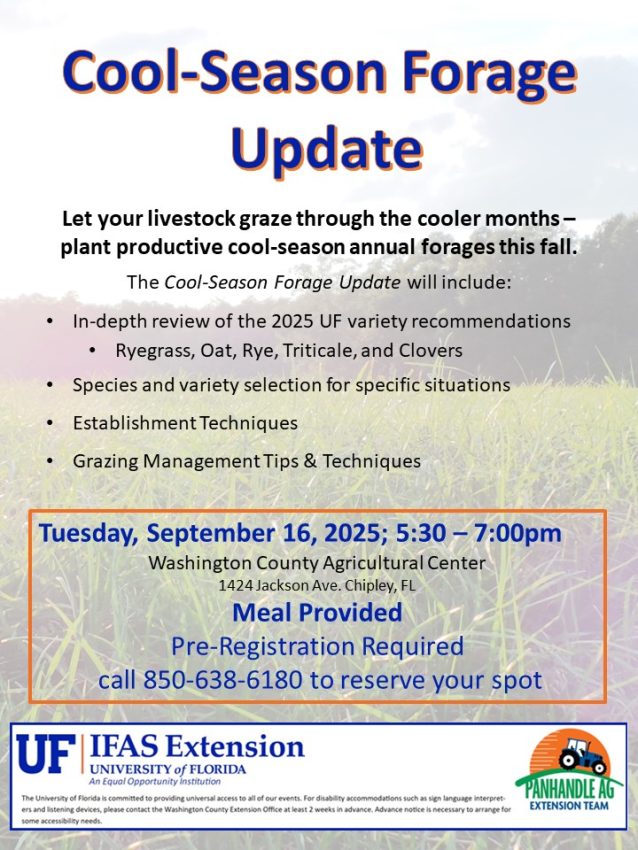If you are raising livestock in North Florida, cool-season forages are an opportunity that you do not need to miss out on. Our winters here are mild enough that we are able to grow a wide variety of annual forage crops through the winter. Doing so allows for grazing and/or hay production in the winter and early spring when our perennial pastures (bahia/bermudagrass) are dormant and not productive. Moreover, the quality of these cool-season forages is generally considerably higher than that of our summer pastures; making the cool-season forage grazing period (December – May under the best of circumstances) ideal for meeting the nutritional needs of high demand animals like lactating cows/mares/ewes, young growing animals, and animals being fattened/finished for slaughter on forages. Even if your production system does not require a high plane of nutrition during the cooler months, cool-season forages can go a long way towards offsetting the winter-feeding costs associated with hay and purchased feed . Feed that animals harvest for themselves is almost always the most cost-effective option.
Being able to take advantage of all the benefits associated with cool-season forages requires some effort and advanced planning. Here are a few key points to consider:
-
In North Florida, we plant cool-season forages in the fall (ideally October 1 – November 15).
– -
Not all cool-season forages are created equally – species and variety matter a lot.
–-
Even if a variety is “good“, that doesn’t mean it is the best option for your operation.
–
-
-
Determining what will work best for you and finding seed can take a while, start early.
– -
Establishment technique, soil fertility management, and grazing management all greatly impact the overall successfulness of any cool-season forage.
–
To help make your selection of the best cool-season forages (species and variety) a little simpler, UF/IFAS researchers annually release a list of recommended varieties. This publication provides the most up-to-date information on adapted cool-season forage varieties for our growing season. The recommendation of varieties is based on multi-location, multi-year cultivar evaluation experiments that may include trials in Florida, Georgia, Alabama, and other southern states. Use the following link to access the 2025 UF/IFAS Cool-Season Forage Variety Recommendations.
To further help local producers sort through the somewhat lengthy variety recommendations and to provide insight on other management factors impacting the success of cool-season forages, UF/IFAS Extension Washington County is hosting a Cool-Season Forage Update, on Tuesday September 16, 2025.
The meeting will be held at the Washington County Agricultural Center (1424 Jackson Ave. Chipley, FL). The meeting will start at 5:30 pm with a sponsored meal and will conclude around 7:00pm. There is no cost to attend the event, but pre-registration is required to facilitate meal planning. Call the Washington County Extension office at 850-638-6180 or email Mark Mauldin to reserve your spot. The evening’s meal will be sponsored by The Washington County Farm Bureau Federation and the Washington County Cattlemen’s Association.
- Peanut Maturity Update – 10/9/25 - October 10, 2025
- Fall Can be a Great Time for Vegetation Management - October 3, 2025
- Peanut Maturity Update – 9/25/25 Edition - September 26, 2025


